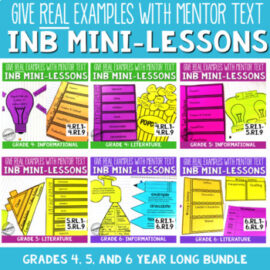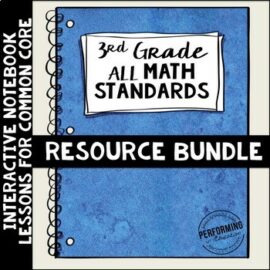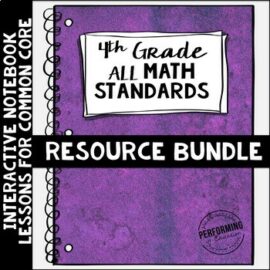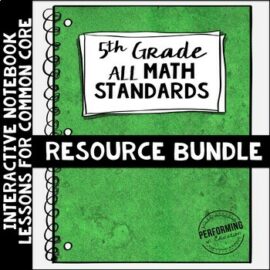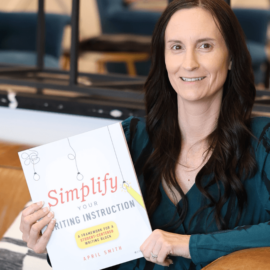Interactive notebooks are a powerful tool when used correctly. My main goal with them is to get students to actually use them to complete work. I love seeing my interactive math and reading notebooks enter a discussion between two students about a text or problem!
Interactive Notes are Great for Scaffolding
Scaffolding is so important in every subject. Students need to be set up for success and given tools to eventually perform on their own. Interactive notebooks helped me achieve this in my classroom. I didn’t provide students with any old INB, I created pages that were pre-scaffolded with examples and organizers that would eventually lead them into doing the task on their own. I’ve used this strategy in reading, math, writing, social studies, and science. My #1 goal is to prepare materials that allow my students to have the tools they need to succeed on their own.
1. Start where students are at.
If students don’t have the basic building blocks of a skill that they were supposed to learn a year or two ago, your interactive notes for today’s lesson isn’t going to get you far. Provide those notes, but differentiate for students by providing them scaffolded notes for the beginning skills. Filling in gaps can make a world of difference – even if you don’t necessarily get them completely caught up.
Another thing to keep in mind for differentiation is the process of creating the notebooks. You may need precut pieces, copies of the finished example, or extra completion time for some students. Work these modifications into your lesson plan.
2. Create pieces that lead students in the right direction.
Don’t just give students already completed interactive notebook pages. There is no scaffolding in doing this. In my reading interactive notebooks, I give students mentor text, and lead them into investigating the standard themselves. This is much more meaningful than just giving them notes to color, and it makes it a lot easier to transition to practicing on their own.
Make sure that the interactive notebook pages are meaningful. If they’re not scaffolding the learning, ask yourself they ARE doing. Don’t waste time just because they look pretty in the end. The process of putting these notebooks together should be the process of learning the standards it covers.
3. Model using your own notebook to succeed in solving a problem.
I always have my own notebook so that I can model how to use this tool. I use my notebook to scaffold every practice we complete on this standard. I also use it in my small group to promote using resources when students need help.
Use your notebooks every day. When my students practice a standard, they are required to use their table of contents to locate their notes on that standard and have it on their desk. I hand out prize tickets to students I see who are referring back to their notes while completing practice problems.
